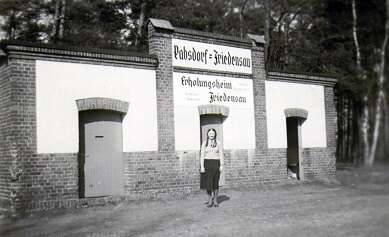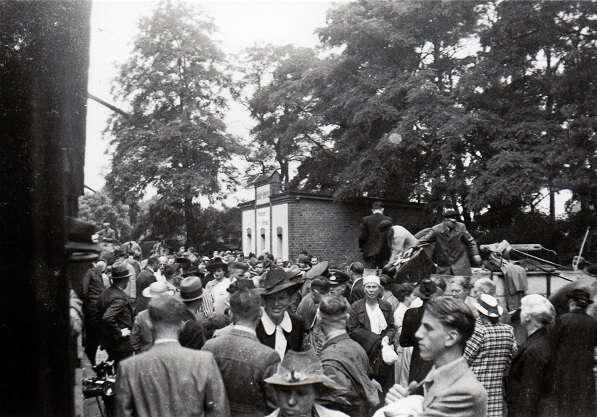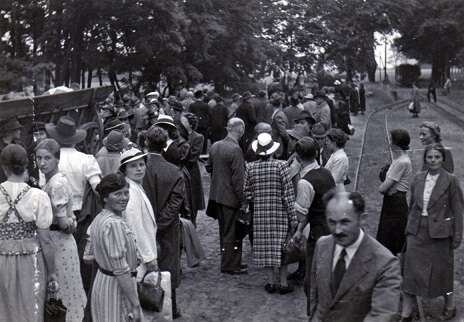The Pabsdorf-Friedensau railway station – a lost place
25. Jan. 2024 / Campus Living / Events
In a travelogue by Ludwig Richard Conradi, which he published in April 1898 in the community magazine "Zions-Wächter", there is a rather incidental remark: "On Tuesday [22 March 1898] I visited a sick sister in a mill near Pabsdorf and had communion with the three sisters here." He travelled there by small train from Burg. This line had only been opened two years earlier.
The footpath to Friedensau ...
Conradi travelled to the Pabsdorf stop and from there had a half-hour walk ahead of him before he reached the Klappermühle. The visit seems to have left a lasting impression on him, otherwise he would not have organised the conference in Magdeburg, some 25 km away, for the following year, at which the founding resolution for Friedensau was passed. It seems that this railway connection also played an important role in the choice of Klappermühle/Friedensau as the location for the planned missionary institution. Although there was also a stop on the Burg-Ziesar railway line in Grabow – 5 km in the opposite direction from Friedensau – the connection to Pabsdorf was an obvious choice because it was only a good 2 km away.
Easily accessible by small railway
After a food factory was built in Friedensau, all goods traffic had to be handled via the Pabsdorf stop. This made it necessary to extend the railway sidings to include an additional siding. But the goods also had to be stored. This required the construction of a building. No, not a station building, but storage facilities for goods and luggage and a waiting room for travellers. The decision was made in the summer of 1906 by the supervisory board of the German Association for Health Care. Authorisations to build on third-party land had to be obtained. And so, in the autumn of that year, the small building in the architectural style of the early Friedensau buildings, a combination of brick and plaster, was officially ready for use. Anyone who came to Friedensau as a guest was greeted by the inscription "Pabsdorf-Friedensau".
Destroyed by the effects of war
When the Red Army advanced to the Elbe at the end of the Second World War in the first days of May 1945, the small bus shelter was completely destroyed. It was not rebuilt in the following years. The great days of the small railway were already drawing to a close. Lorries, buses and passenger carriages were gradually pushing back the small railway traffic. Now it was no longer possible to pick flowers or enjoy the breeze on a leisurely journey on the small railway – everything was getting faster. In the late summer of 1965, the narrow-gauge railway ceased operation. Passenger transport was now covered by buses.
Nature takes over the site
This sealed the end of the Pabsdorf-Friedensau "railway station". The site fell into disrepair and became overgrown, with locust trees taking over. If you cross Pabsdorf today in the direction of Möckern and leave the forest on both sides behind you after about 400 metres, you will no longer suspect that the Pabsdorf-Friedensau railway station was located on the right-hand side right at the edge of the field.
Johannes Hartlapp, lecturer in church history

Copyright: Friedensau archive | AAE

Copyright: Friedensau archive | AAE

Copyright: Friedensau archive | AAE